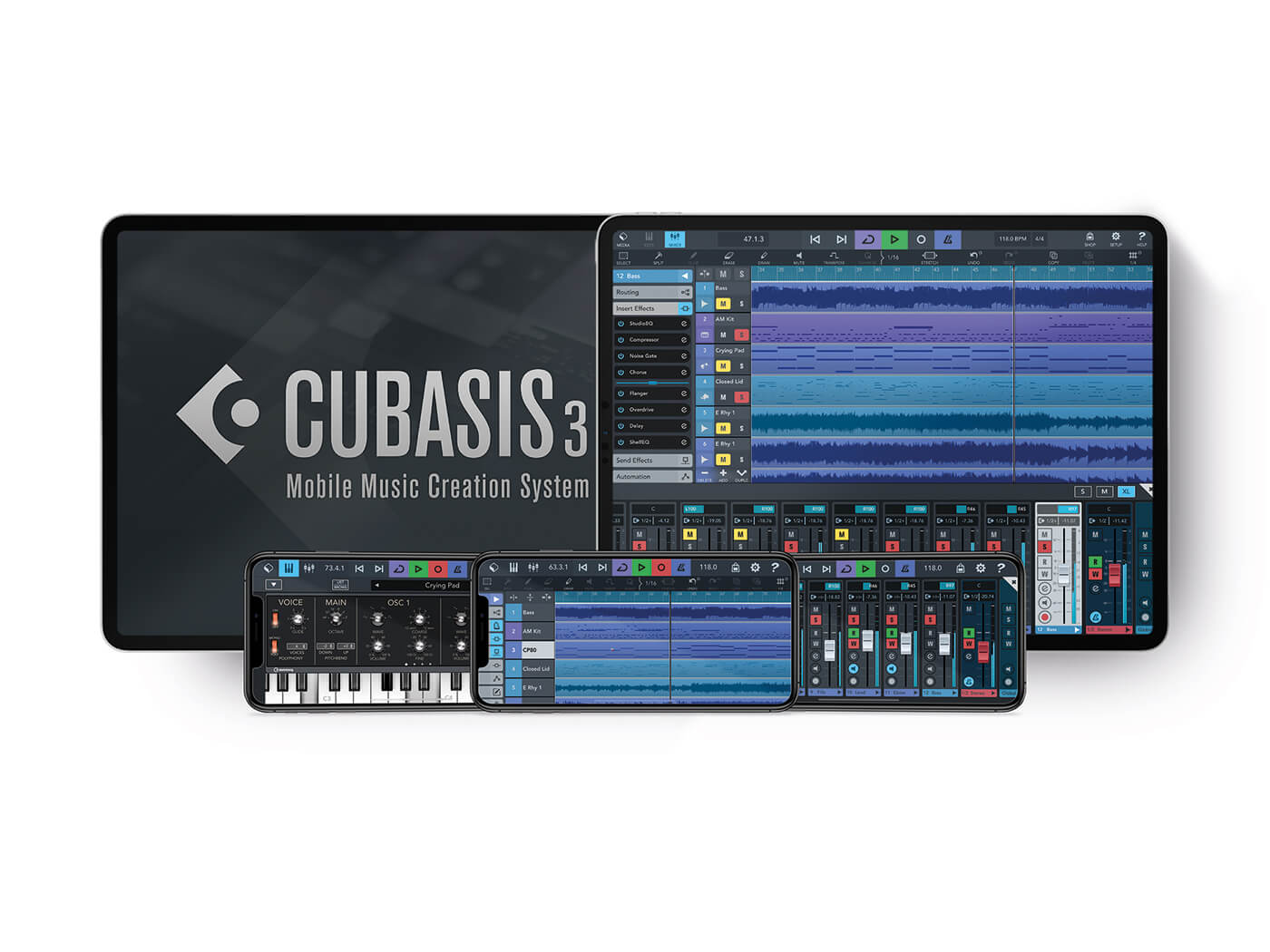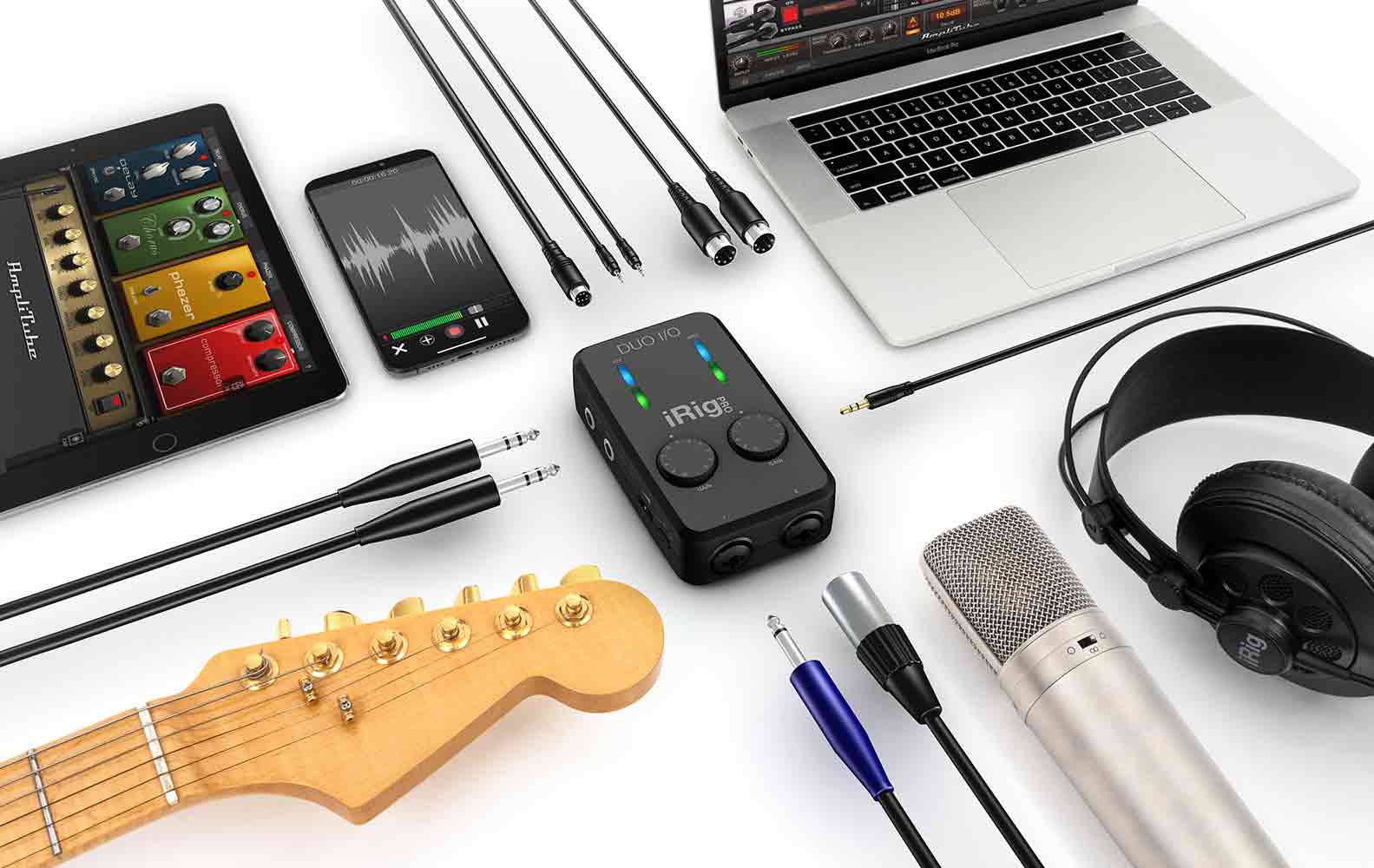iOS Music Making - what you need to know.
Posted by Esteban Miranda on
I've now been a music producer for almost 15 years. (Moment to freak out about that, please!)
In that time, I've gone from recording my music onto an 8 track, to moving onto a clunky computer and using Cubase, then graduating up to Logic Pro and finally Ableton.
I remember my original 8 track, you had to bounce the track out onto a CD - in real time - if you wanted to listen to it!
One of the most striking things about being involved in music production for all of that time is how much I've witnessed things change.
The advances in music production technology over the past decade or so have been huge, and there's one area that, especially amongst my generation of producers, has for a long time been viewed as something of a novelty.
And that is Music making apps on mobile devices.
But is it really just a home to apps that aren't as good as your fully fledged DAWs? Or are there some viable options out there?
That's what we're going to explore in this article!
iOS or Android?
Now that music making on mobile devices is becoming more and more accessible and advanced, the age old debate of iOS vs Android now has a new field of battle!
The thing is though, there isn't really that much between them. In this guide we will be focusing on iOS, to keep things relatively simple, but a lot of the principles are applicable whether you're using iOS or Android. (Other than Garageband, obviously).
Many of the mobile music making apps today are available for both iOS and Android, so you're pretty much sorted, regardless of what device you're running. Though be sure to check that any apps you are after are compatible with your devices before you make any purchases!
Thanks to ever-improving processing power on mobile devices, the possibilities for running all types of music software are vast; from virtual synthesisers and effects, to more DJ-focused remix apps, and even fully fledged DAWs.
The cool thing about these is, due to how powerful mobile devices now are, many of these music-making apps are just as sophisticated as the ones available on your computer.
Another cool element that is unique to mobile music making is the possibilities presented by a touchscreen. Compared to a mouse-based interface which we are used to when using a computer based DAW, the things you can do with a touch screen can be quite interesting.
There are certainly some workflow quirks you should be aware of when using mobile music programs, but there are so many benefits, it's worth a look into.
So let's get right to it!
The Obv-iOS Contender
If you're an owner of an iPhone or an iPad, you'll know that Garageband comes free on your iOS device. There's a bit of a sub-debate as to whether an iPhone or an iPad is the best iOS device on which to make music, but each has their own pros and cons.
The obvious pro of an iPad is more screen space; this means you can navigate your DAW more easily.
On an iPhone, however, you've got way more portability. It's the device you're likely to always have on you, so you can get your musical ideas down whenever they come to you.
Obviously it depends on whatever device you have available, and for some of you, that may even be both!

I've recently covered Garageband in a few of my guides, and far from the novelty it was once perceived as, it's evolved into a fully fledged and versatile DAW.
The iOS version is really impressive, featuring a collection of Touch Instruments and a fully-featured recording studio. It gives you the power of a fully capable DAW, but in a completely mobile format.
It features Live Loops, which allows you to make music 'like a DJ'
Features include:
• Use Multi-Touch to tap and trigger a Live Loop cell or group of cells
• Get started with templates or build your own grid from scratch with Apple Loops
• Create custom loops by recording directly into a cell using any Touch Instrument
• Use Remix FX to perform DJ-style effects
• Tap record to capture your performance
The coolest thing about using Garageband on iOS, is by far the Multi-Touch integration. It brings a whole new way of working to your DAW; different ways of expression, various gestures to control the way you play. All of these add up to a unique music making experience. Specifically, there is the Smart Instruments feature, which allows you to do things like playing an entire string orchestra, perform with Chord Strips and autoplay using a variety of instruments.
There are also all the expected sound packs, loops and additional instruments which you can download to enhance your Garageband experience.
Garageband is a native iOS app, meaning that it comes bundled and available on your iPhone or iPad as soon as you launch it for the first time. But there are a variety of other options out there for mobile music makers, and not all of them are as simple as this download and play format.
So let's cover a few of the things you need to know.
Mobile Considerations
We are used to working with different types of software on our desktops or laptops. A DAW is a different type of software to the VST plugins you're running. And things aren't much different on iOS.
There are two types of apps to be aware of as a would-be mobile music maker.
These are general and AUv3 plugins.
The difference between these is that general apps can run on their own. They can be loaded independently, and work as their own piece of software on your device, just like you would run a program or an app on your computer. This type of app covers your DAWs, as well as synths, drum machines and effects.
The second type of app, AUv3 plugins, are - in case you hadn't guessed - your plugin apps. So these must be opened within a host program on your iPhone or iPad. These are essentially the mobile version of AU or VST plugins, and they're usually instruments or effects.
Other options for DAWs
So, we've covered Garageband, but there are other mobile dedicated DAWs out there, and it's worth exploring what the options out there are.
Some of the biggest mobile DAWs out there are BeatMaker 3 from INTUA, Cubasis 3 from Steinberg and even an FL Studio Mobile edition which is a surprisingly capable DAW.
The thing to bear in mind with mobile DAWs is that, despite the huge advances we have seen in mobile music making, there are still limitations, relative to desktop DAWs.
While they do include their own built-in instruments, as well as many effects which allow you to create fully realised tracks, you shouldn't be expected identical ports of desktop DAWs and effects.

So there are basically two kinds of iOS DAW. Open and Closed. An example of an Open DAW is Cubasis 3, which allows you to work with standalone instruments and AUv3 plugins, if supported. Essentially, an Open DAW allows you to integrate third party apps into your DAW and use them in your music making.
Closed DAWs are, on the other hand, fully-featured music production programs that allow you to create viable music, but they don't allow you to integrate third party applications. An example of this is Korg's Gadget, which does allow you to expand adding additional instruments. There's also Roland's free Zenbeats, which has access to the Roland Cloud, and online store where you can add more content.
We will do a rundown of some of the best options for mobile DAWs in a separate guide.
The logistics.
As you might expect, working with a movile device as your music making hub brings about a different workflow than making your music on a computer, so there are a few things you need to know if it's something you're interested in doing.
iOS can be a little complicated when you're sorting out your Audio and MIDI routing. Desktop apps can't send audio to each other without a third party app acting as the middle man, such as Soundflower. iOS apps also need to be compatible with this type of audio routing protocol to be able to be used in DAWs and other programs.
So, this is something you'll need to be aware of if you're buying apps to use in your mobile production suite.
There are several options for inter-app audio routing. The first one was Audiobus, which is a virutal router app for both Audio and MIDI. Later, Apple developed its own option; Inter-App Audio (IAA).
Many mobile music making apps support both, but it's worth noting that some only support one of the options. As a general rule, older apps prefer Audiobus, while newer apps are fine with IAA.
Just be sure to check this when you're looking at apps to get.
Recording your external gear
We touched on the benefits of using a Touch Screen interface for music making earlier, but this isn't always going to be your preferred way of inputting your notes. Though many iOS instruments have in-app keyboards, many of you will probably prefer playing physical keys.
It's more comfortable, and allows for more expression than simply tapping an unresponsive touchscreen.
A thing you need to consider when using MIDI keyboards with iOS is that often when we use a computer, it's our computer that's prodiving power to the MIDI keyboard. This can be a bit tricky with iOS.
You have a few options.
You'll need a bluetooth enabled MIDI controller, or a Camera Connection Kit Adapter and a USB cable.
If your MIDI keyboard doesn't have its own power source, then you'll be best off gettign a Lightning to USB 3 Camera Adapter which will allow you to charge your iOS device while using the keyboard, meaning it can draw power at the same time.
So that's MIDI sorted, but what about audio?

If you plan on recording any vocals, guitar or any audio in general to your iOS device, you'll need an audio interface, just like you do on a Computer.
There are a huge range of options out there, and many have been designed specifically to work with mobile devices, and they're small and portable. They're also often powered by the USB cable or batteries, which means you can take them on the go.
One of the most powerful is IK Multimedia's iRig Pro Duo I/O (pictured above), but there are many options out there.
Verdict
There are many options out there for making music on iOS. Whether you're going to stick with the basics and use Garageband, or delve into the wider world of iOS music making devices out there, there's a lot to sink your teeth into.
As we mentioned earlier, we'll cover some of these options in a future guide.
There's definitely some trial and error involved, as the workflow varies quite significantly from what you're used to when working on a computer. However, you can't deny that there are some inherent positives to iOS music making.
For one, there's the portability. You can make music on your phone, for goodness sake! But there's also the novel ways you can use a touch-interface to create sound, as well as the wide range of options out there in terms of apps.
It's definitely a hugely growing part of the music production world, and there's a real possiblity for some solid music making using only iOS devices.
So, hopefully this piqued your interest into the world of iOS music production. Be sure to check our future guides, in which we will cover some of the top options out there for creating music on the go!